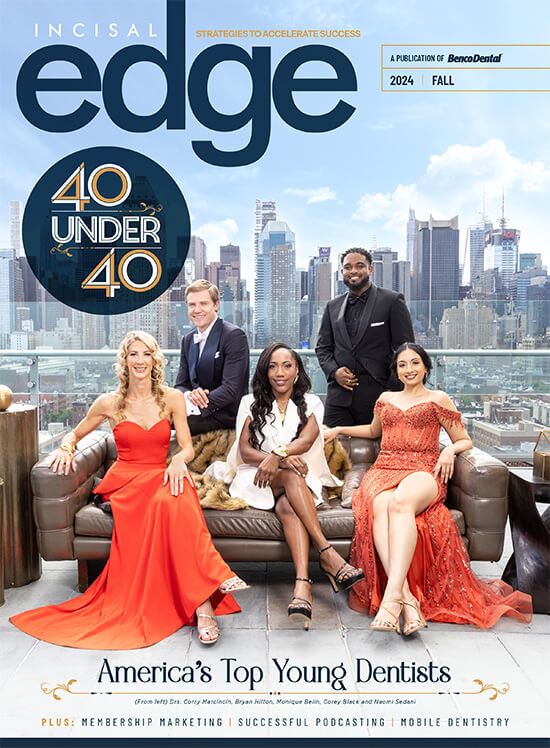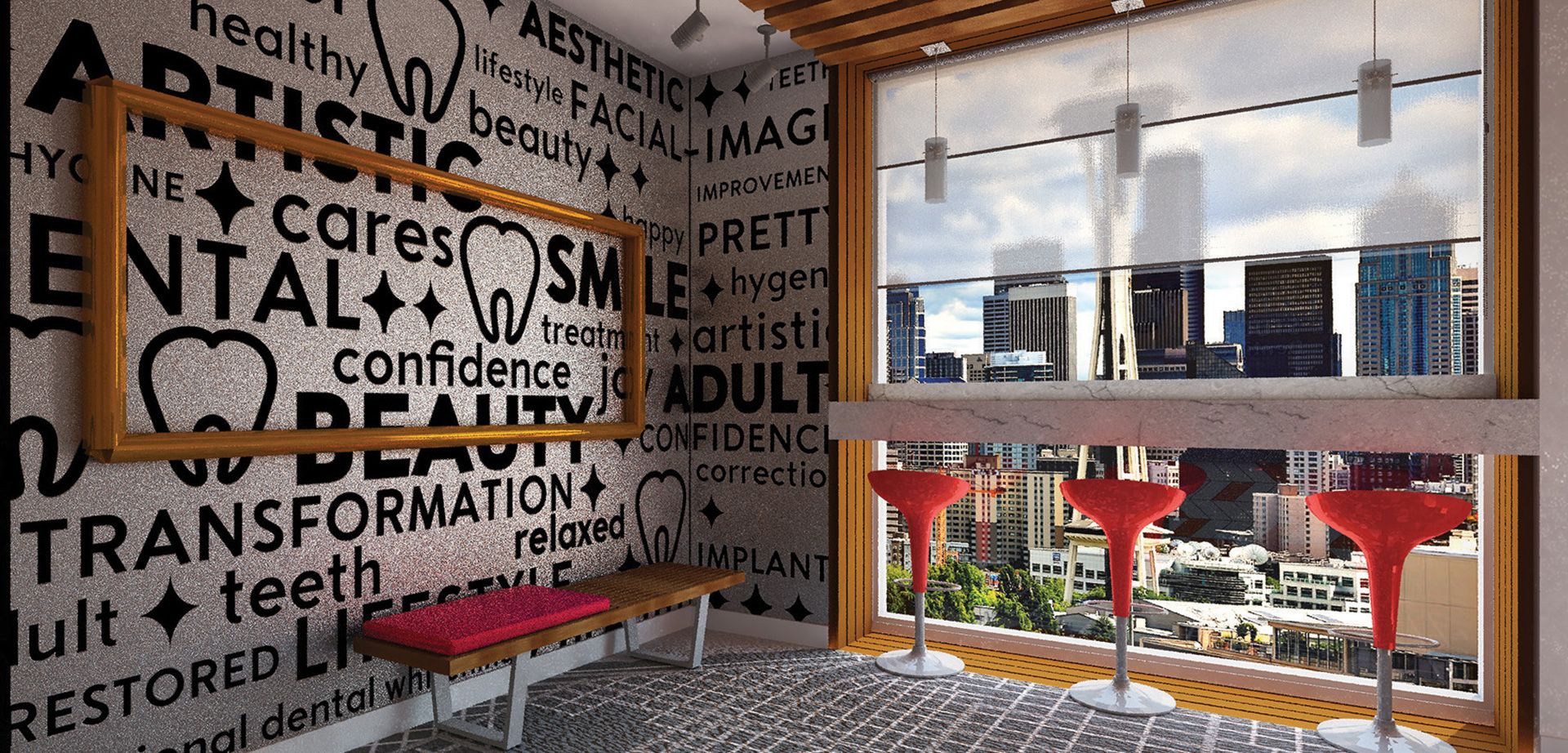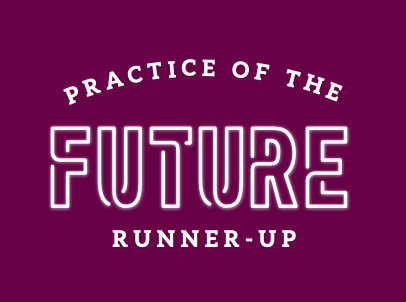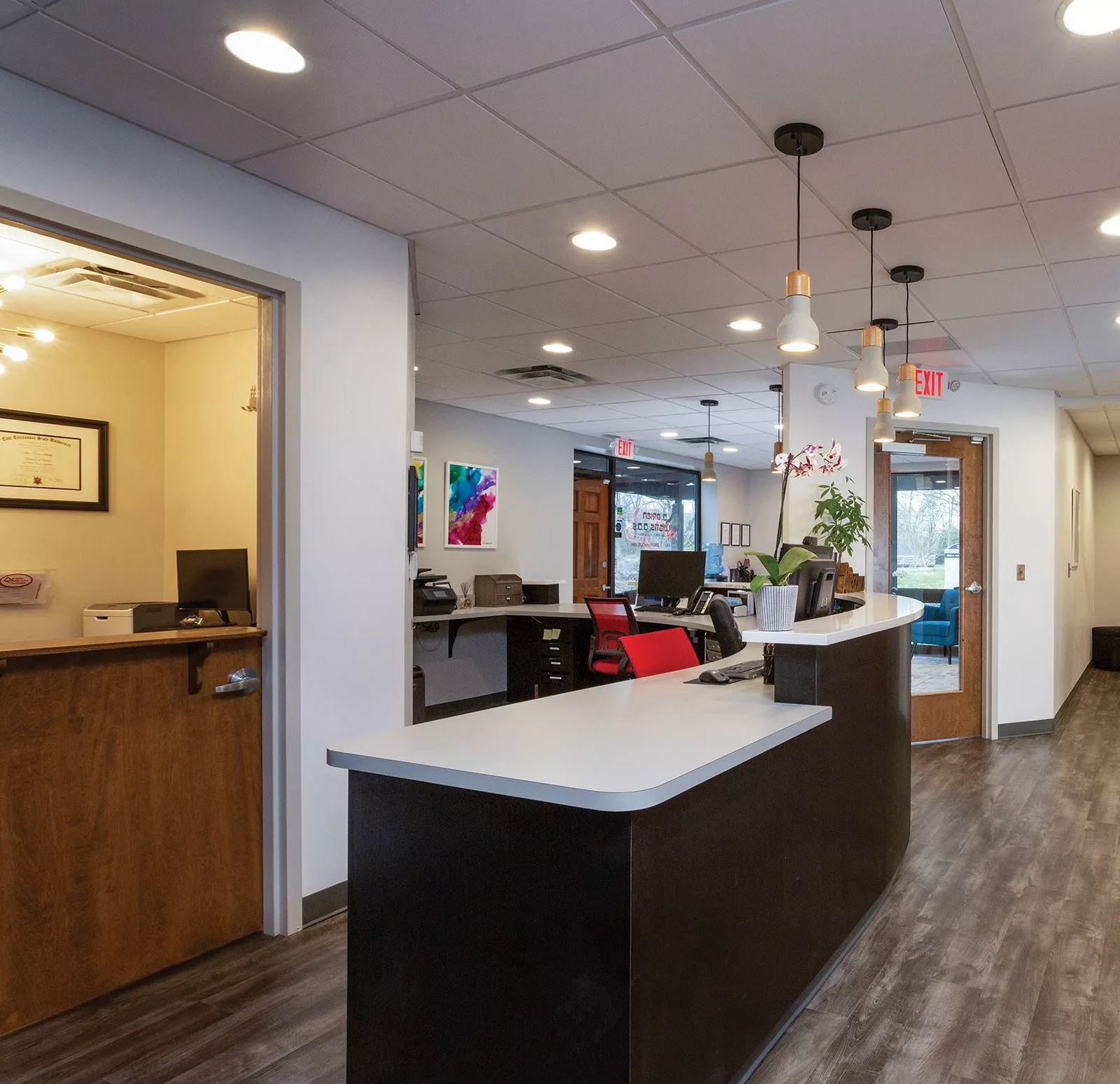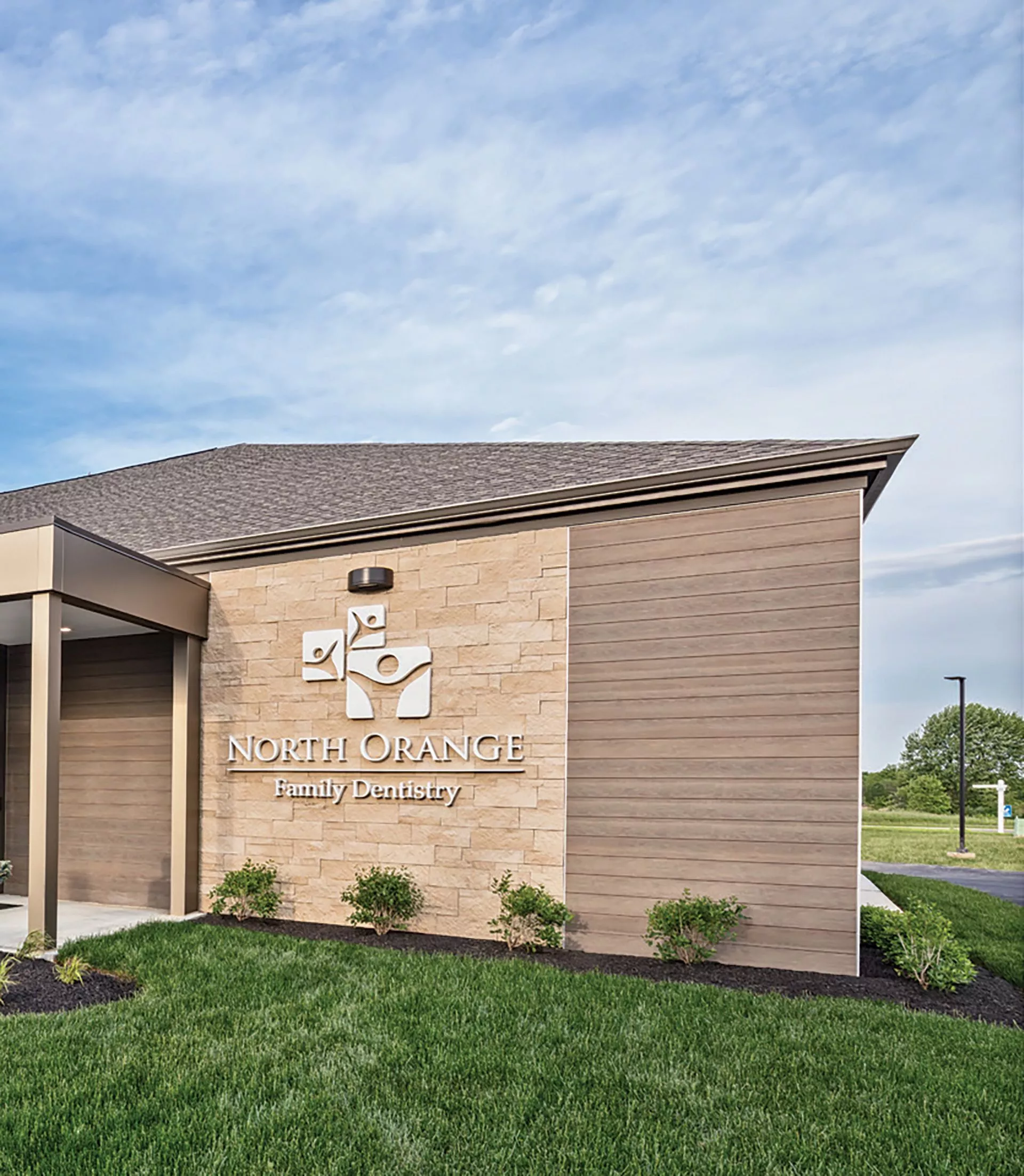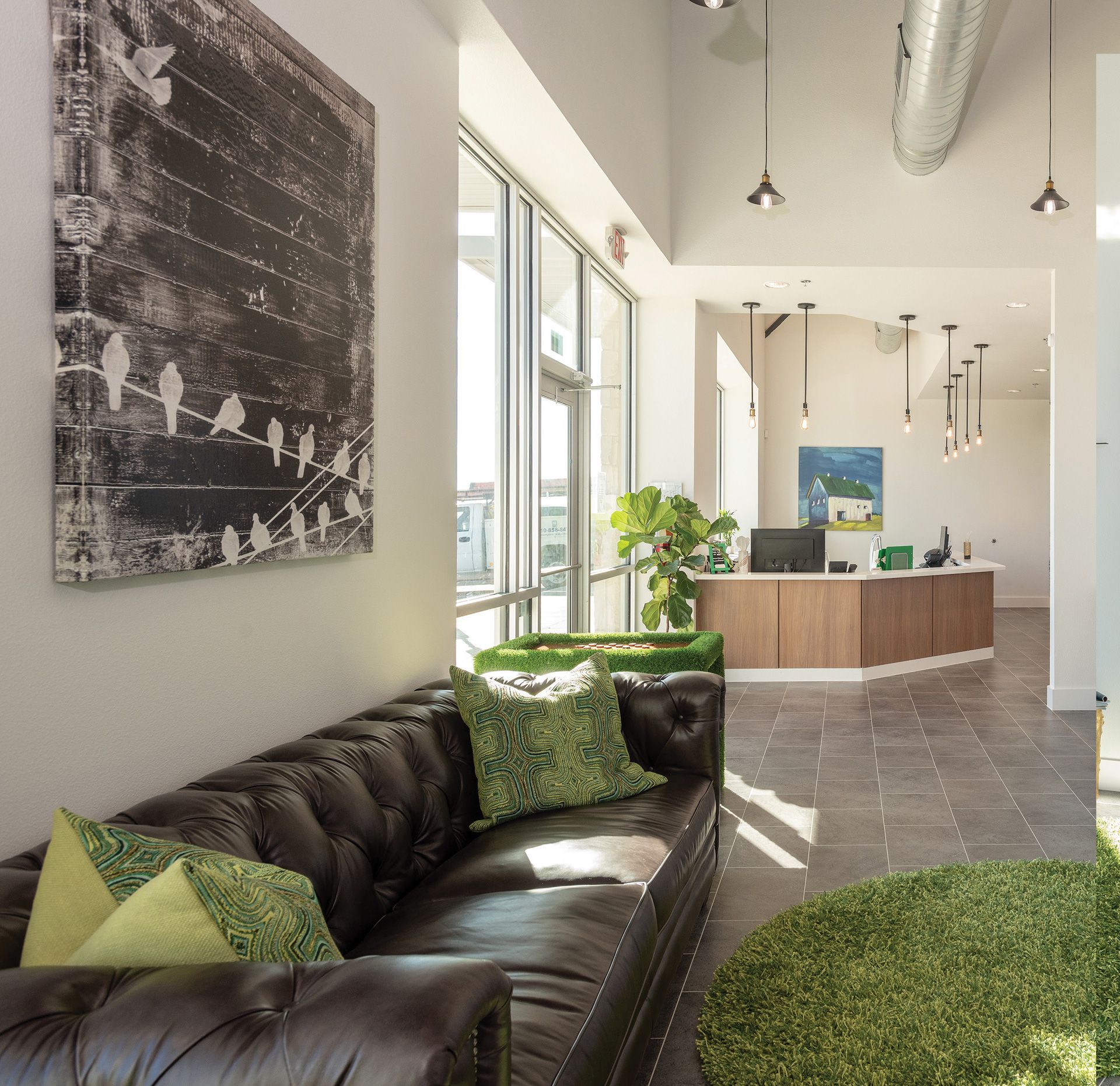LAST YEAR, Brooklyn-based interior designer Mingda Liu submitted a design for “Fusion Orthodontics and Pedodontics,” an irreverent blend of the quotidian and the futuristic that won runner-up for Practice of the Future. For 2020, he redoubled his efforts with this fanciful “Artistic Dental Studio” that he placed in Seattle despite the fact that he’s never been there. This year’s winner, Liu sat down with Incisal Edge to discuss his creative process—and where dental- practice design goes from here.
Q: You were runner-up in the 2019 competition. Did you approach this entry differently?
A: I believed I could do better in 2020, so I did. I had too many design ideas in the last competition that I didn’t execute well, so I simplified this concept: It’s an artistic dental studio with logical planning, cus- tomized materials and photorealistic rendering.
Q: What’s unique about this practice design? What makes the space work?
A: I “de-institutionalized” a typical dental-care facility and turned it into an artistic space combining a gallery and open bar—certainly a more relaxed and inviting environment. The metal art frame draws attention to the custom dental-themed wall covering, instantly making anyone sitting on the bench part of the artwork. Floor-to-ceiling windows with wooden frames abstractly become an enlarged shadowbox art piece as well. The reception area and all operatories have spectacular, un-obstructed skyline views—which for sure can positively affect patients and a practitioner’s outcomes.
Q: What advice would you offer architecture and interior-design students who are just starting out?
A: Always challenge yourself; push the limits and push the boundaries. You’ll be amazed what you can accomplish. And, of course, do everything you do for the right reasons.
Q: Which specific features or equipment did you include? Did you plan this to accomplish certain objectives?
A: To make the layout logical and efficient for both patients and practitioners, the reception space and all operation rooms are lined up with full-length windows—again, ones that feature the skyline view. The rest of the space, on the opposite side, is divided by a common hallway.
Q: What attracts you to dental-practice design in the first place?
A: As in other fields, design for the dental industry is constantly evolving, with innovative products and equipment that help promote good patient experiences, better care and employee productivity. I look forward to dis-covering more about dental-specific design in the years ahead.
